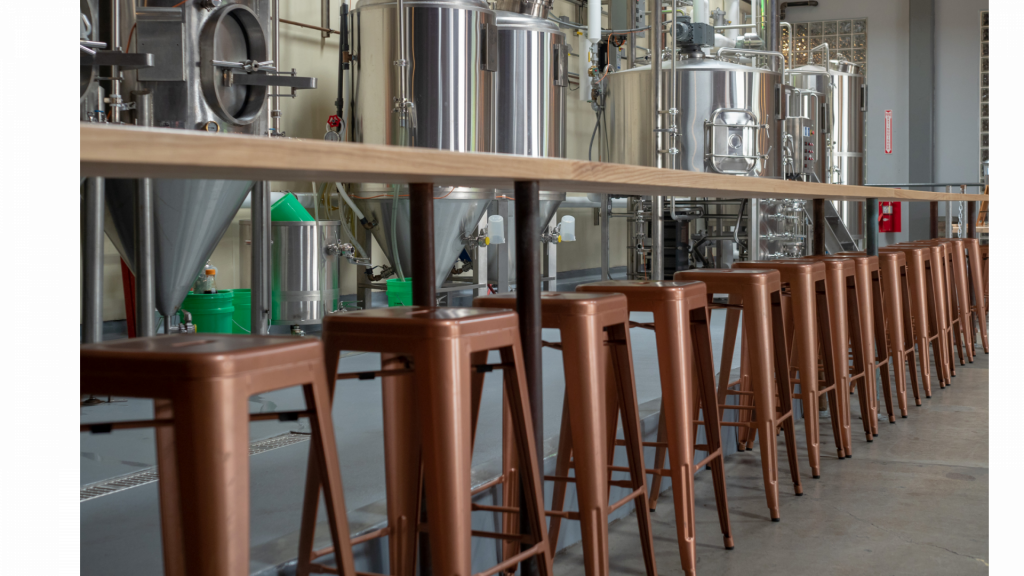The office industry has seen a huge shift in large tenants, especially in major cities. Financial and law firms are now bidding against tech companies. Meanwhile, in the industrial market there’s a new kind of tenant, who has yet to make as big an impact as tech companies, but who is definitely pouring new life into older properties.
Micro Brewery Build Out
In a previous career, I owned a diner. Across the street was a pizza place that was known more for its craft beer selection than its pizza. About 17 years ago, a little known company started building a restaurant about two blocks away; you may know them as Iron Hill Brewery. The biggest difference between the pizza shop and this place: patrons could see their brew being made. This was just beginning of the micro brewing trend. Breweries are opening at a rate of at least one a da. There are currently 4,000 in the US. Pennsylvania ranks 1st in the nation for the amount of craft beer produced each year (mostly because of Yuengling and Boston Beer who owns an 850,000 square foot brewery outside of Allentown). About 1.5 million square feet in Philadelphia is dedicated to craft brews according to an industry study. But as the popularity of a local beer spreads, many brewers are bursting at the seams. Victory Brewing started brewing in an old Pepperidge Farm factory and in just nine years it’s grown to become the 29th largest craft brewer. The company has opened a second, 212,000 square foot facility to accommodate the growth, and recently opened a third location. Breweries who want to make money beyond just the beer they pour at their brewpubs need distribution facilities; however acquiring that space is not easy or cheap.
Micro Distilleries
Prohibition ended in 1933, but it’s taken until recently for Americans to really acquire the taste for spirits. A decade ago, there were about 60 distilleries in the US; now there are close to 600. According to the American Distilling Institute, the average cost of building a craft distillery is half a million dollars, and it can take two years of work to produce something people are willing to drink and pay for. For many landlords, it’s just too big a risk. Many distillers start small: the smallest commercial distillery in the country is a mere 325 square feet in Brooklyn, NY. But, to really make money, distillers need to sell their product. Pennsylvania and New Jersey are some of the few states that allow distillers to open their space to the public and have satellite tasting rooms. To be cost effective, many distilleries are collaborating with established breweries. A client of mine designed a new space for a local brewery in a industrial area. In the same industrial park, a craft distillery has also opened. Opening in industrial parks has started a new trend which will keep lights are on and parking lots are full during the weekend.
Zoning Issues for Craft Businesses
The industrial look and feel has now become a consistent theme in the craft alcohol business. Recently, while representing a re-purposed textile mill, there were several inquiries from micro brewers. To brew/distill requires high ceilings, concrete floors, ADA bathrooms, ground level doors and that’s just the beginning. Since most, if not all, breweries/distilleries are a hybrid of retail and industrial, there are zoning issues. Many townships across the country, are dealing with how to issue a permit in an industrial space for a mixed-use business. Some townships are placing limits on the size of the tasting room and how many square feet can be dedicated to brewing. However, the American Planning Association did a study that found most of these limits can be overridden with conditional use permits. Fire code is a concern since some counties consider the distilling materials to be flammable. Due diligence and building plenty of capital are the two ways to get past these initial hurdles.
Craft Businesses Future Rent
It’s not just alcohol that’s occupying industrial space. I’ve fielded calls from a small scale coffee bean company and a dog treats maker. As these craft companies continue to grow exponentially, formerly outdated industrial buildings will be transformed into popular drinking holes. At present, most crafters are leaning towards low rent and central locations to start their businesses. The tax incentives are favorable for old, often abandoned buildings. But it won’t last forever, as numbers for industrial sector are on pace to break records this year. It’s only a matter of time before neighborhoods and industrial areas that are seeing resurgence, thanks to craft breweries and distilleries, will see rent go up.

